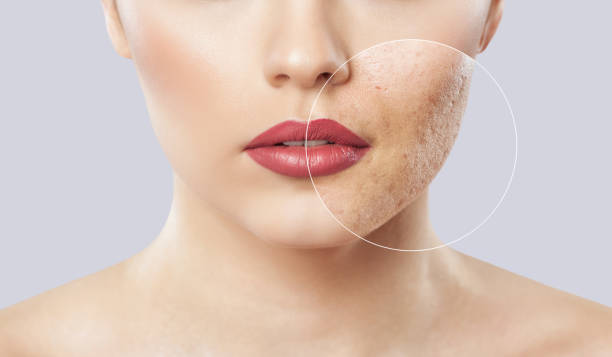Who Gets Cosmetic Acne?

Any woman who is acne-prone or suffered acne as a teenager, even if only a mild case, is almost certain to be affected by comedogenic ingredients in cosmetics. Additionally, as mentioned earlier, plenty of women who would otherwise never have acne are exposing themselves to acne by applying comedogenic makeup and skin care products. Young women in the "acne age" are the most likely to react badly to comedogenic ingredients. Therefore, teenagers and women in their twenties are the most susceptible to cosmetic acne. And ironically enough, these are the same age groups that adore their MAC.
Cosmetic acne manifests as fairly numerous, slightly elevated small whiteheads, appearing over the cheeks and chin and sometimes the forehead. Periodically, some of these whiteheads turn into inflamed pustules. Women with cosmetic acne often get caught up in a vicious cycle. Because it may take up to six months before cosmetic acne develops from a particular product, a woman is unlikely to connect her makeup use with the acne. The more she breaks out, the more makeup she uses to cover it up—which leads to more blemishes and more covering up. The problem eventually spirals out of control. Already deeply committed to cosmetic use, she is likely to try one cosmetic solution after another, hanging on to the promise of the new products, and each one more expensive than the last—and this whole product frenzy not only depletes your funds, it also only worsens the situation. Thousands of women experience cosmetic acne for as long as 10 or 15 years, never knowing what is causing their constant complexion problems.
If you are in the San Diego area and would like to learn more about our services or book an appointment today, click here. If you are new to Vasseur Skincare or needed help choosing the right skincare, click here. If you would like to talk with one of our Vasseur team members for a free consultation, click here and we will get back with you as soon as we can (please allow 1-3 business days for a response).
Leave a comment
Comments will be approved before showing up.
Also in Education
Copper Serum and Red Light Therapy: Your New Skincare Power Duo
Learn how combining copper peptide serum with red light therapy can boost collagen, reduce wrinkles, and enhance your skin's health for radiant results.
Green Tea Serum & Red Light Therapy: The Ultimate Skin Duo
Discover how combining green tea serum with red light therapy can boost collagen, fight aging, and give you radiant skin. Learn how to use them together.
Boost Red Light Therapy with Copper Peptide & Green Tea Serums
Learn how to combine red light therapy with copper peptide and green tea serums to enhance collagen production, reduce wrinkles, and achieve radiant skin.